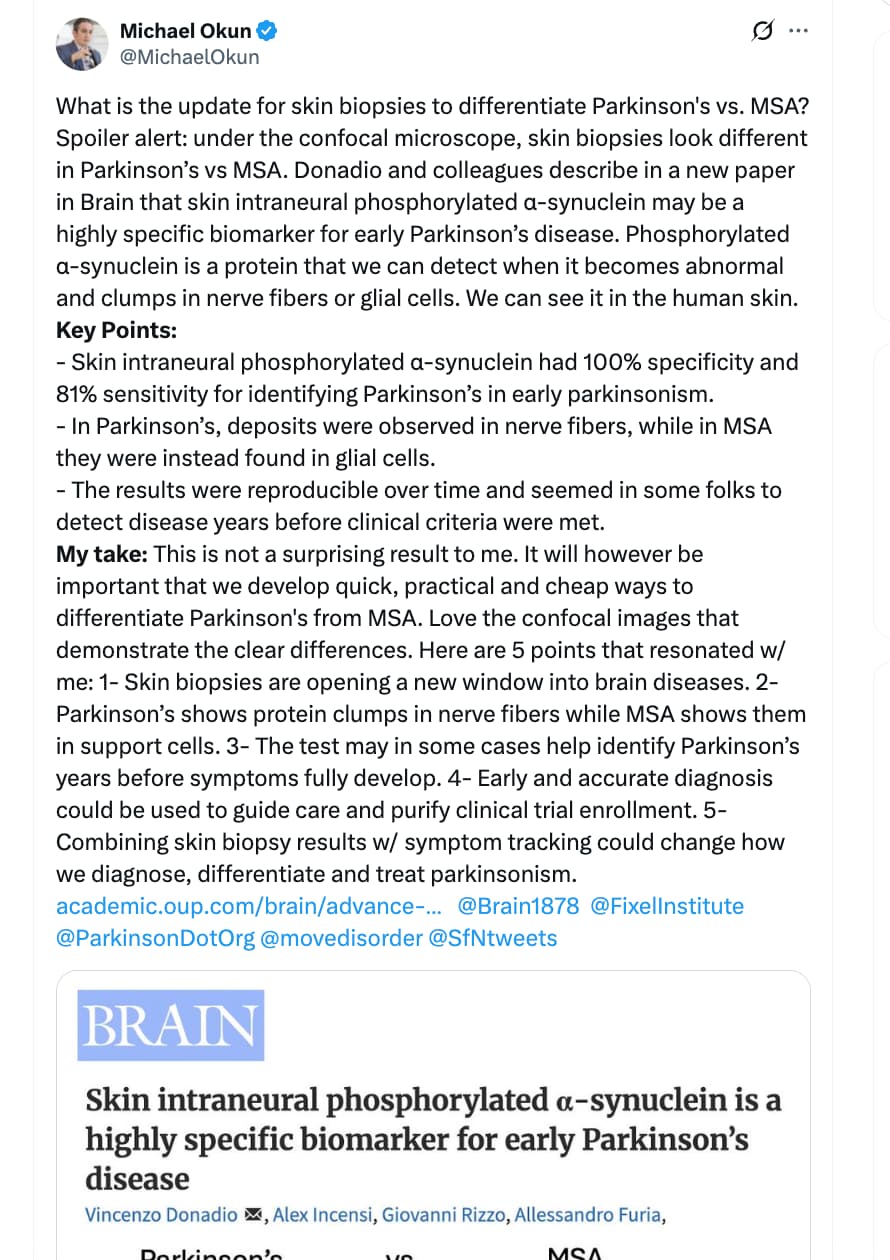asked gpt5pro
Short answer: Some, but not “a lot.”
Bulk RNA‑seq and ATAC‑seq from skin are excellent for understanding what your skin (keratinocytes, fibroblasts, resident immune cells) is doing and they can capture certain systemic signals (e.g., inflammatory tone, some environmental exposures). But most organ‑specific biology (liver, kidney, brain, heart) won’t be reliably inferred from a skin biopsy alone. Large cross‑tissue datasets show that regulatory programs are highly tissue‑specific; notably, sun‑exposed skin is among the tissues that share the least splicing regulation with others, underscoring its distinctiveness. (PMC)
What skin omics can tell you that sometimes generalizes
Inflammation/immune pathways.
Skin is an immune‑active barrier organ. Transcriptome “modules” (e.g., interferon/JAK‑STAT, IL‑17/TNF) are robustly recoverable from skin and often align with systemic immune activity in inflammatory disease. Still, skin and blood emphasize different aspects of the same disease state—skin reflects the local tissue pathology; blood captures systemic regulation—so they’re complementary, not interchangeable. (Nature)Certain systemic diseases that manifest in skin.
In disorders like systemic sclerosis, skin gene‑expression patterns track disease biology and treatment response and can mirror broader fibrotic/inflammatory processes. That’s informative because the disease involves skin, not because skin universally mirrors the rest of the body. (PMC)Environmental exposure signatures.
Site matters. Sun‑exposed vs. non‑exposed skin shows markedly different expression regulation, reflecting UV exposure and local context; if you sample only one site, those local signals can dominate your readout. (PMC)Regulatory programs in your skin cells.
ATAC‑seq can help infer transcription‑factor activity (via motif deviation or footprinting) and link open chromatin to expressed genes. It’s powerful but method‑sensitive—footprinting needs careful bias correction/benchmarking. (PMC)
What it’s not good at by itself
General, whole‑body status.
The GTEx atlas shows many regulatory effects are tissue‑specific; skin (especially sun‑exposed) is an outlier compared to other tissues. That limits how much you can generalize from a skin biopsy to internal organs. (PMC)Organ‑specific diseases without a skin component.
Signals from liver, kidney, brain, etc., are only weakly reflected in skin. Models that try to impute other tissues from accessible ones consistently perform better when they combine multiple accessible tissues (blood + skin + adipose) rather than skin alone. (Nature)
How much “general health” can you infer if you combine data?
There’s growing evidence you can partially predict other tissues from accessible ones:
- From blood alone, one study significantly predicted tissue‑specific expression for ~60% of genes across 32 tissues; this predicted tissue expression also tracked several complex diseases better than raw blood expression. That gives a sense of the upper bound when using a very systemic tissue. (PMC)
- With multiple accessible tissues (blood + sun‑exposed skin + non‑exposed skin + subcutaneous adipose), modern models (e.g., HYFA) improve cross‑tissue prediction, reinforcing the idea that skin adds value, but is not sufficient on its own. (Nature)
If your goal is “whole‑body health insight,” consider this stack
- Add a same‑day blood draw. Blood transcriptome/proteome/metabolome are much more reflective of global physiology, especially when tracked over time (viral infections, insulin resistance, etc.). Longitudinal multi‑omics studies show strong, interpretable systemic signals from blood that respond to health events. (PMC)
- Use multiple accessible tissues if feasible. When you combine blood with skin (and, optionally, subcutaneous adipose), cross‑tissue imputation improves. (Nature)
- If aging biology interests you: DNA methylation (not RNA/ATAC) supports cross‑tissue “epigenetic clocks” (multi‑tissue Horvath clock; also skin‑specific clocks). That’s a different assay (450K/EPIC arrays or bisulfite‑seq), but it provides a broadly comparable biomarker across tissues. (BioMed Central)
If you do proceed with skin RNA‑seq/ATAC‑seq
Sample design.
Cell composition matters.
Bulk skin is a mix (keratinocytes, fibroblasts, immune cells). Either separate epidermis/dermis, use single‑cell RNA‑seq on a subset, or deconvolve bulk RNA‑seq (e.g., CIBERSORT/xCell) so changes in cell mix don’t masquerade as pathway shifts. (PMC)ATAC‑seq analysis.
Use motif‑deviation (e.g., chromVAR) and validated footprinting (e.g., TOBIAS) with appropriate bias correction; be cautious interpreting TF “activity” as systemic health without corroboration. (PMC)
Bottom line
- Skin omics alone: great for skin biology and certain systemic immune conditions that involve skin, plus exposure and regulatory insights.
- General health across the body: you’ll get some signal, but not “a lot.” If that’s your aim, pair skin with blood (and ideally another accessible tissue) and/or add a DNA methylation assay for aging biology. (PMC)
Medical note: Skin biopsies are invasive and can scar; discuss sampling sites and risks with a clinician. This is informational and not a diagnosis.
